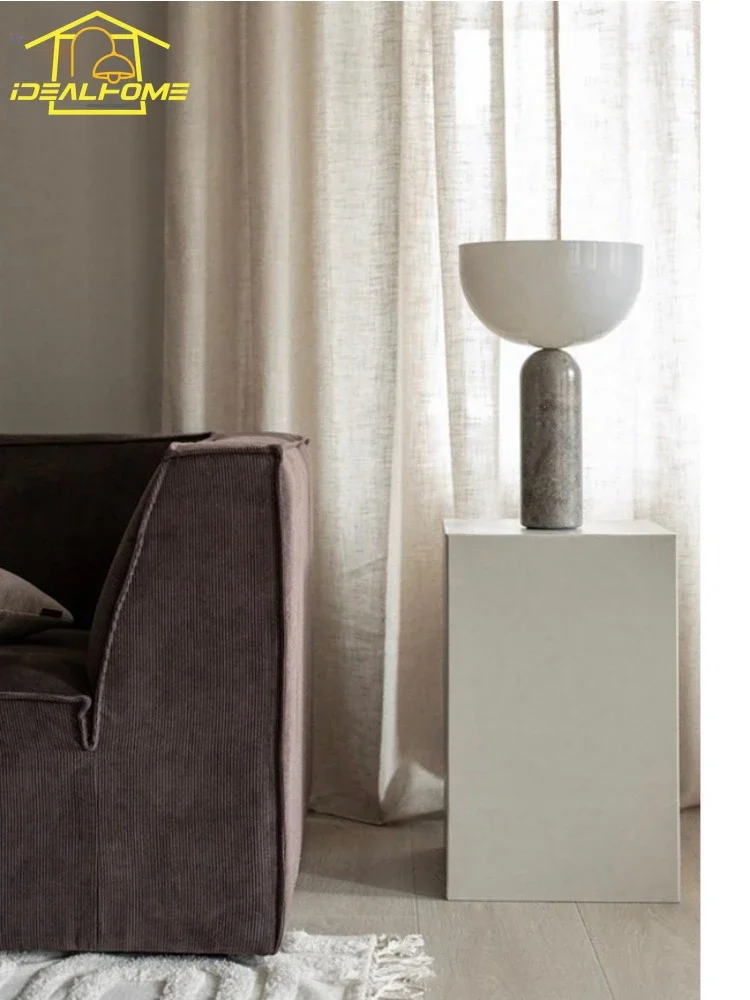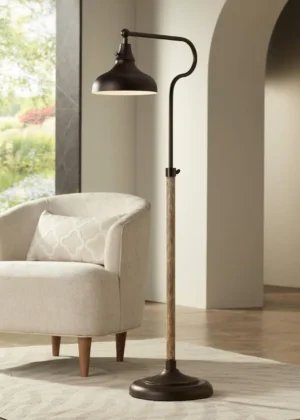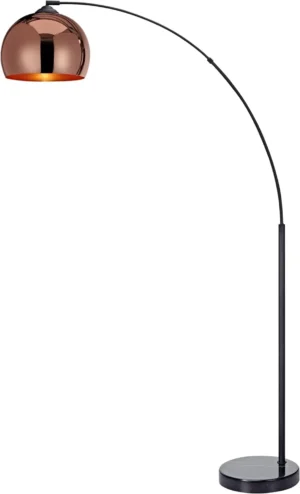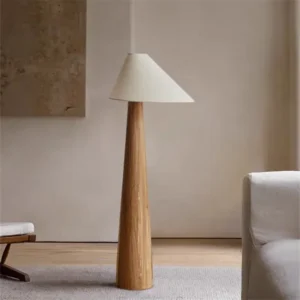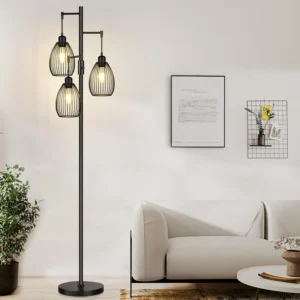Understanding Lampshade Fundamentals
A lampshade serves two essential purposes: it diffuses light to create the perfect ambiance while enhancing your room’s decor. More than just a practical accessory, the right lampshade transforms an ordinary lamp into a striking design element that can define your space.
When selecting a lampshade, you’re making both a functional and aesthetic decision. The perfect shade:
- Controls light distribution and eliminates glare
- Sets the mood through the quality of light it produces
- Complements your interior style and color scheme
- Balances visually with your lamp base
Studies show that proper lighting can significantly affect perception of space, with well-chosen lampshades making rooms appear more inviting and comfortable. The impact of changing just the shade while keeping the same lamp base can be dramatic – turning a dated piece into something fresh and contemporary, or a plain lamp into a statement piece.
As you begin your lampshade selection journey, keep these key considerations in mind:
- Size and proportion relative to the lamp base
- Shape compatibility with both the base and surrounding furniture
- Material choice for desired light diffusion and style
- Proper fitting to ensure stability and safety
- Purpose of the lamp in your space
Understanding how different elements of room decor work together will help you make more informed decisions throughout the lampshade selection process.
The Golden Rules of Lampshade Sizing and Proportion
Achieving the right proportion between your lamp base and shade is fundamental to creating a visually pleasing lamp. Follow these tried-and-true rules for perfect lampshade sizing:
The Rule of Thirds: The lampshade height should be approximately 2/3 the height of the lamp base. This creates visual harmony and balance.
Width Proportion: The shade’s bottom diameter should typically be roughly equal to the height of the lamp base, or slightly wider than the widest part of the base.
Bottom Diameter Rule: For optimal proportion, choose a shade with a bottom diameter about 2 inches (5 cm) wider than the base at its widest point.
Height-to-Width Balance: For most traditional lamps, the lampshade height should be about 40% of its bottom diameter to maintain visual balance.
Hardware Coverage: Ensure the shade is deep enough to hide all electrical components, including the socket and part of the neck. No one wants to see bare bulbs or electrical hardware!
These proportions vary slightly based on lamp size:
- Small table lamps (under 20 inches/51 cm total height): Use a shade with a bottom diameter of 12-16 inches (30-40 cm)
- Medium table lamps (20-26 inches/51-66 cm): Choose a shade with 14-18 inch (35-46 cm) bottom diameter
- Large table and floor lamps (over 26 inches/66 cm): Select shades with bottom diameters of 16-20+ inches (40-50+ cm)
An important practical consideration: when seated, the bottom of the shade should be at eye level to avoid direct glare from the bulb. This is especially crucial for reading lamps and bedside lamps.
Proportion is particularly important with floor lamps, as their height makes them prominent room features. Well-designed marble base arc floor lamps demonstrate how proper proportions create elegance and visual interest.
Matching Lampshade Shape to Lamp Base Design
The relationship between your lamp base and shade shapes creates either visual harmony or interesting contrast. Generally, the shape of your lampshade should echo or complement the shape of your lamp base.
Common Lampshade Shapes and Ideal Pairings
- Drum/Cylinder Shades: These versatile, modern shades feature straight sides with equal top and bottom diameters. They pair beautifully with:
- Cylindrical or column-like bases
- Square or rectangular bases
- Clean-lined contemporary lamps
Mid-century modern styles
Empire Shades: With their classic tapered design (wider at bottom than top), empire shades complement:
- Traditional urn-shaped or curved bases
- Ginger jar lamps
- Classical column designs
Most conventional table lamps
Bell Shades: Featuring graceful curves with a flared bottom, these elegant shades work well with:
- Rounded, curvy lamp bases
- Bases with significant detail or ornamentation
- Traditional and vintage-style lamps
Bases with narrower middles and wider tops/bottoms
Square/Rectangular Shades: These contemporary options add geometric interest and pair with:
- Angular or geometric lamp bases
- Square or rectangular bases
- Modern, minimalist designs
Strong architectural elements
Oval Shades: Perfect for saving space while maintaining elegance, these work with:
- Console lamps where depth is limited
- Oval or flattened lamp bases
- Wall-mounted lights or sconces
- Space-constrained areas
While matching similar shapes often creates harmony, intentional contrast can make a bold design statement. For instance, pairing a round shade with a square base highlights both forms through juxtaposition.
Interior designers recommend considering the visual “weight” of both elements – a heavily detailed base often pairs best with a simpler shade to avoid competing focal points. Understanding how to integrate lamps with your overall interior design creates more cohesive spaces.
Lampshade Materials and Their Effect on Light
The material of your lampshade dramatically affects not just how it looks, but how it transforms light in your space. Different materials fall along a light diffusion spectrum from highly translucent to completely opaque.
Material Options and Light Effects
- Cotton and Linen
- Light Quality: Warm, natural diffusion with excellent clarity
- Best For: Everyday living spaces, casual and relaxed settings
- Considerations: Shows stains easily but can often be cleaned
Light Output: 70-80% of total bulb brightness with soft diffusion
Silk and Satin
- Light Quality: Luxurious, elegant glow with subtle shimmer
- Best For: Formal settings, bedrooms, dining areas
- Considerations: Premium price point, susceptible to sun damage
Light Output: Varies widely based on thickness, typically 50-70%
Paper and Parchment
- Light Quality: Clean, even light distribution with modern appeal
- Best For: Contemporary spaces, Asian-inspired decor
- Considerations: Less durable, may yellow over time
Light Output: 60-90% depending on thickness and treatment
Pleated Fabrics
- Light Quality: Textured, traditional with interesting shadow patterns
- Best For: Classic interiors, formal spaces
- Considerations: Collects dust in pleats, harder to clean
Light Output: 50-70% with distinctive light patterns
Metal and Glass
- Light Quality: Dramatic, directed light with sharp definition
- Best For: Accent lighting, contemporary settings
- Considerations: May create more glare, gets hot with higher wattage bulbs
- Light Output: Varies from minimal (metal) to nearly 100% (clear glass)
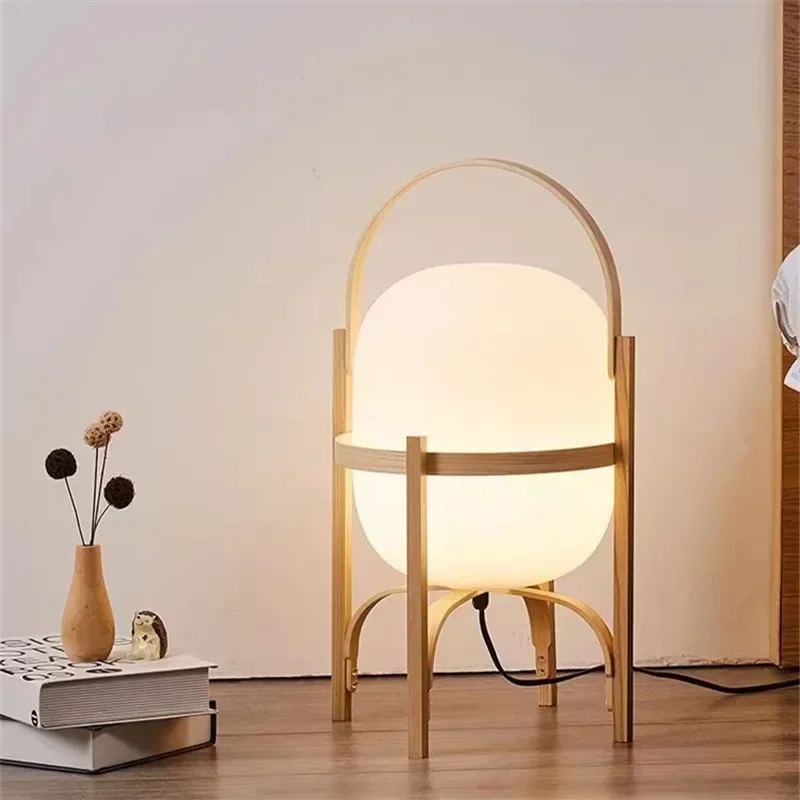
The color of your shade also impacts light quality. White and light-colored shades maximize brightness, while darker shades create more intimate, focused light. Patterns and textures add visual interest both when the lamp is on (creating shadow patterns) and off (as a decorative element).
For optimal lighting quality, consider how the material interacts with the bulb type. LED bulbs run cooler, making them suitable for most materials, while traditional incandescent bulbs may present heat concerns with delicate fabrics or papers.
The natural materials used in wood arc floor lamps pair particularly well with natural fabric shades like linen or cotton for a cohesive organic aesthetic.
Understanding Lampshade Fitter Types
The fitter is the often-overlooked hardware that connects your lampshade to the lamp base. Choosing the correct fitter type ensures your shade fits securely and sits properly on your lamp.
Common Lampshade Fitter Types
- Spider Fitter (with harp and finial)
- Most common type for table and floor lamps
- Features metal ribs converging at a central ring
- Sits on top of a U-shaped metal harp
- Secured with a decorative finial that screws onto the harp’s threaded top
Measurement: Determined by the harp’s height (from base to top)
Clip-on Fitter
- Attaches directly to the light bulb with metal clips
- Common for small decorative lamps, chandeliers, wall sconces
- No harp required
Measurement: Determined by bulb diameter
Uno Fitter
- Attaches directly to the lamp socket beneath the bulb
- Features a ring that screws onto the socket
- Available in internal (threads inside ring) or external (threads outside) variations
- Common in older lamps and some European designs
Measurement: Based on socket diameter
Reflector Bowl Fitter
- Specialized fitter for lamps with a diffuser bowl
- Often found in torchiere floor lamps
- Sits above or below a glass/metal reflector bowl
Measurement: Requires exact diameter match to bowl rim
European (Euro) Fitter
- Similar to Uno but typically larger
- Often requires adapter for use with American lamps
- Measurement: Standard 40mm or 28mm inner diameter
To determine the correct fitter type for replacement shades, measure:
- Harp height (for spider fitters): From bottom to top
- Socket diameter (for Uno fitters): Outer rim measurement
- Bulb diameter (for clip-on fitters): At widest point
If you encounter fitting issues, adapters and converters are available to accommodate mismatches between shade and lamp. These affordable solutions can save you from purchasing an entirely new shade or lamp.
The technical aspects of lamp fittings become especially important with feature-rich designs like adjustable arc floor lamps, where shade attachment may need to accommodate moving components.
Lampshade Purpose and Room Placement
The intended function of your lamp should guide your shade selection, as different lighting needs require different shade characteristics.
Function-Based Selection
- Task Lighting (reading, working, crafting)
- Choose shades with wider bottoms to cast broader light
- Select lighter-colored, more translucent materials
- Consider adjustable options for directional control
Avoid very dark or opaque materials that limit light output
Ambient Lighting (general room illumination)
- Medium-opacity shades provide balanced light diffusion
- Drum shades offer good all-around light distribution
- Consider larger shades for greater light spread
Light to medium colors maximize illumination
Accent Lighting (highlighting features, creating mood)
- Darker or more opaque shades direct light up/down rather than outward
- Colored shades can cast interesting tinted light
- Metal shades with cutouts create pattern effects
- Smaller shades concentrate light on specific areas
Room-Specific Placement Considerations
- Bedside Tables
- Bottom of shade should align with shoulder height when seated in bed (to prevent glare)
- For paired lamps, maintain identical heights and shade styles
- Consider narrower silhouettes if space is limited
Semi-opaque shades protect sleeping partners from direct light
Living Room
- Scale shade size to furniture proportions (larger sofas call for larger lamps/shades)
- Consider sight lines when seated (ensure shades don’t block views or TV)
- Coordinate multiple lamp shades for cohesive design
Balance with other light sources (overhead lighting, natural light)
Console Tables/Entryways
- Narrower shades prevent obstruction in high-traffic areas
- Consider taller, slimmer profiles for visual impact
- Ensure stability with proper proportions on narrow surfaces
Light-colored shades maximize brightness in typically darker areas
Dining Areas
- Bottom of shade should clear head height when seated to maintain conversation visibility
- Consider wider shades for better table coverage
- Ensure shade depth prevents direct view of bulb when seated
Interior designers recommend evaluating where to place floor lamps before finalizing shade selection, as positioning affects both function and appearance.
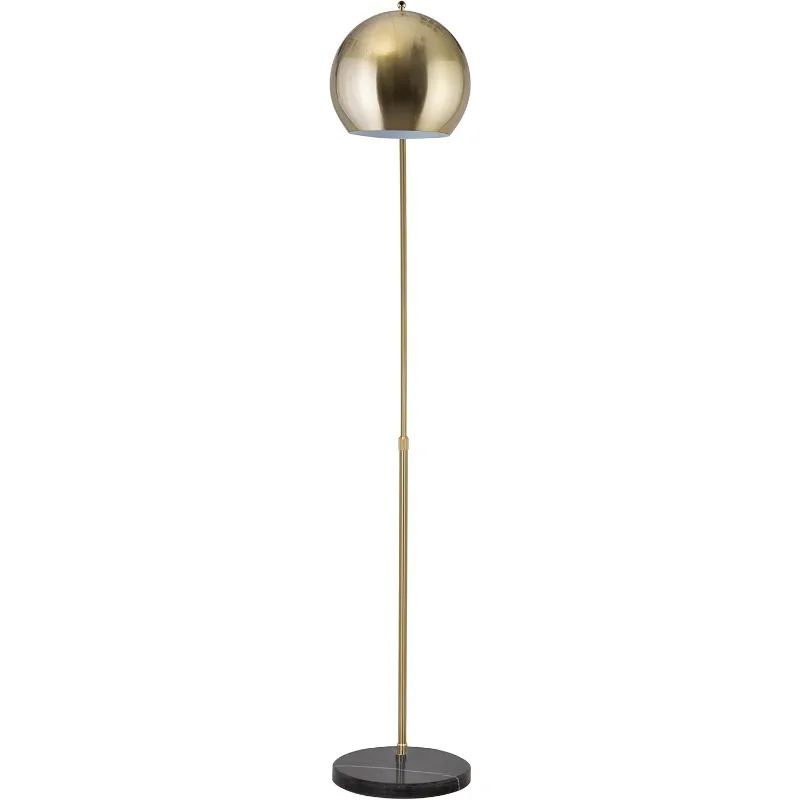
Adjustable Arc Floor Lamp, Bronze Arc Floor Lamp
Price range: $440.95 through $558.52 Select options This product has multiple variants. The options may be chosen on the product pageContemporary Arc Floor Lamp, Large Arc Floor Lamp, Marble Base Arc Floor Lamp
$224.94 Select options This product has multiple variants. The options may be chosen on the product pageMid-Century Arc Floor Lamp, Wood Arc Floor Lamp
$230.86 Select options This product has multiple variants. The options may be chosen on the product pageVintage Arc Floor Lamp, Wood Arc Floor Lamp
Price range: $603.87 through $1,346.09 Select options This product has multiple variants. The options may be chosen on the product page- $1,003.85 Select options This product has multiple variants. The options may be chosen on the product page
3 Light Arc Floor Lamp, Dimmable Arc Floor Lamp
Price range: $162.86 through $246.50 Select options This product has multiple variants. The options may be chosen on the product page
Integrating Lampshades with Room Decor
Your lampshade should harmonize with both your lamp base and your overall room design to create a cohesive look.
Lampshade Style by Decor Theme
- Modern/Contemporary:
- Clean drum or square shapes
- Neutral colors or bold geometric patterns
- Materials: linen, cotton, paper, metal
Minimal embellishment, emphasis on form
Traditional:
- Empire, bell, or pleated shapes
- Classic patterns (damask, toile) or solid colors
- Materials: silk, linen with trim, pleated fabric
Embellishments like fringe, braiding, or tassels
Rustic/Farmhouse:
- Simple silhouettes with natural materials
- Textured fabrics in neutral tones
- Materials: linen, burlap, textured cotton
Minimal embellishment, emphasis on texture
Mid-Century Modern:
- Geometric or drum shapes with clean lines
- Solid colors or abstract patterns
- Materials: fiberglass, parchment, textured paper
Distinctive forms that make a statement
Coastal/Beach:
- Light, airy shapes in natural tones
- Blue, white, or sandy color palettes
- Materials: linen, cotton, sometimes with subtle patterns
- Occasionally trimmed with rope or other nautical elements
When deciding whether your lampshade should be a focal point or a complementary element, consider the visual hierarchy of your room. If your lamp base is highly decorative, a simpler shade often works best. Conversely, a plain base can be elevated with a more decorative or colorful shade.
Color coordination doesn’t mean exact matching – consider complementary or analogous colors from your room’s palette. A lampshade can pull accent colors from nearby artwork, pillows, or rugs to create cohesion.
Seasonal updates to your decor can include switching lampshades – lighter, breezier fabrics for spring/summer and richer, warmer materials for fall/winter can refresh your space without major investments.
Understanding how to pair lighting with key furniture pieces creates balanced, functional room compositions that feel purposeful rather than random.
Practical Shopping Tips for Finding the Perfect Lampshade
Follow these practical strategies to ensure you select the ideal lampshade for your needs:
Bring your lamp base when shade shopping whenever possible. If not feasible, take detailed measurements (height, width at widest point) and clear photos from multiple angles.
View shade options in natural light to accurately assess color and material quality. Store lighting can be misleading, especially for how translucent materials will appear in your home.
Check the shade from seated position to replicate how you’ll typically view it. This helps ensure it will hide hardware and provide proper light diffusion from functional angles.
Assess both lit and unlit appearance by testing with a bulb when possible. A shade might look perfect when off but create unflattering light patterns or color cast when illuminated.
Consider bulb compatibility – different shade materials have different heat tolerance. For hot-running incandescent or halogen bulbs, ensure adequate ventilation and heat-resistant materials.
Examine construction quality by checking seams, bindings, and attachments. Quality construction justifies higher prices through better appearance and longevity.
Test stability by gently bumping the lamp to ensure the shade sits securely and doesn’t wobble or tilt.
Consider multiple options before making a final decision. Take photos of possibilities to compare in your actual space if buying in person.
Budget considerations vary widely – while basic shades start around $20-30, high-quality custom options can exceed $200. Investment pieces make sense for prominent lamps in main living areas, while more budget-friendly options work well in less visible locations.
For more comprehensive guidance on all aspects of lamp selection, our complete arc floor lamp guide provides valuable insights on matching bases with appropriate shades.
Common Lampshade Mistakes to Avoid
Even experienced decorators sometimes make these lampshade selection errors. Awareness of these common pitfalls will help you avoid them:
Size Errors
Problem: Choosing a shade that’s too small exposes hardware and creates glare; too large overwhelms the base and looks disproportionate.
Solution: Follow the sizing rules (shade approximately 2/3 base height, bottom diameter slightly wider than base’s widest point).
Shape Mismatches
Problem: Pairing conflicting geometric forms creates visual tension (like a very angular shade on a heavily curved base).
Solution: Echo the base’s primary shape in your shade selection, or intentionally contrast with careful consideration.
Fitter Incompatibility
Problem: Incorrect fitter type results in unstable attachment or improper shade positioning.
Solution: Identify your lamp’s fitter system before shopping and measure accurately; use adapters when necessary.
Material Mismatch to Function
Problem: Selecting highly opaque materials for task lighting, or very translucent materials for mood lighting.
Solution: Consider the lamp’s primary purpose first, then select materials with appropriate light diffusion properties.
Neglecting Light Quality
Problem: Focusing solely on appearance while ignoring how the shade affects light color and distribution.
Solution: Test how the shade looks when lit, especially with your specific bulb type.
Prioritizing Style Over Safety
Problem: Choosing flammable materials that sit too close to high-wattage bulbs.
Solution: Ensure proper clearance between bulb and shade interior; consider LED bulbs for heat reduction.
Disregarding Room Context
Problem: Selecting a shade that clashes with surrounding decor or doesn’t meet the room’s functional needs.
Solution: Consider the entire room when selecting shade style, color, and material.
Many lampshade mistakes can be easily corrected. If your current shade isn’t working, try swapping it rather than replacing the entire lamp. Well-designed lamps like black arc floor lamps can pair with multiple shade styles for different looks.
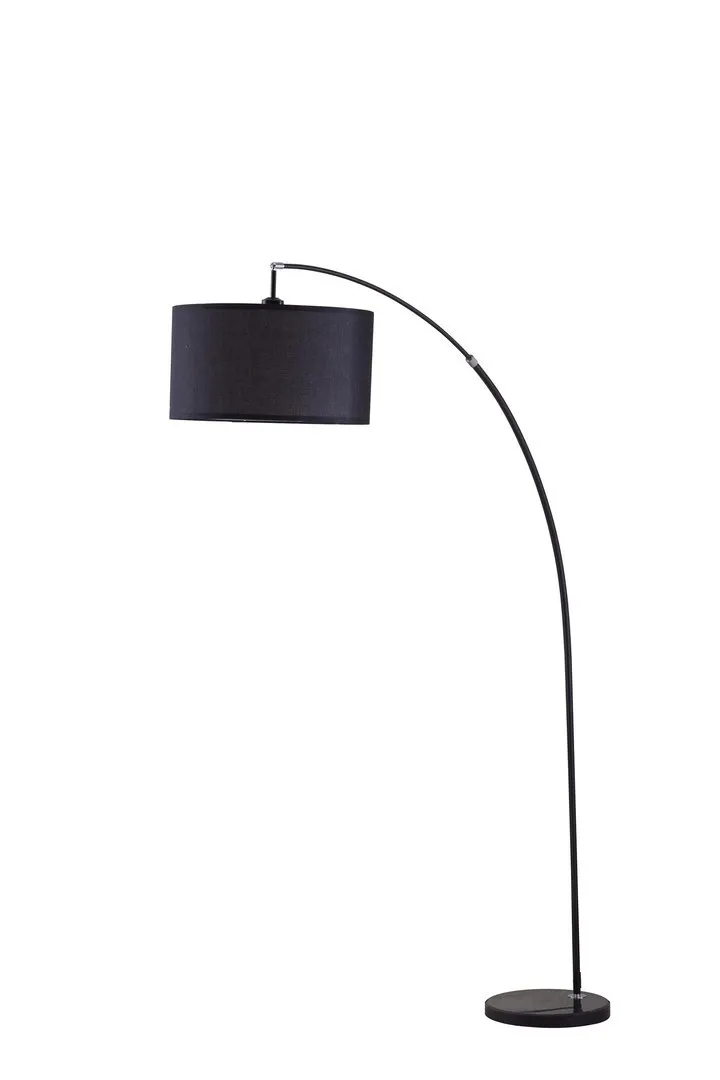
Can You DIY or Customize a Lampshade?
Customizing lampshades offers a way to create unique lighting solutions tailored to your space. Here’s what you need to know about DIY lampshade projects:
When DIY Makes Sense
- You need an unusual size not readily available commercially
- You want to match a specific fabric or pattern from your decor
- You’re updating an existing shade that’s structurally sound
- You enjoy crafting and have the necessary skills
Basic Customization Options
- Recovering: Applying new fabric over an existing shade structure
- Trim Addition: Adding ribbon, braiding, fringe, or beading to a plain shade
- Painting: Using fabric paint or specialized translucent paint for artistic effects
- Decoupage: Applying paper elements like maps, photos, or decorative papers
If you’re considering a DIY project, keep these safety considerations in mind:
* Use flame-resistant materials, especially for higher wattage bulbs
* Ensure adhesives are heat-resistant and fully cured before use
* Maintain adequate clearance between the bulb and any added materials
* Consider switching to LED bulbs to reduce heat concerns
For those who appreciate custom looks but prefer professional results, many lampshade specialty companies offer made-to-order services where you can select exact specifications. These services typically range from $75-300 depending on size, materials, and complexity.
When coordinating your lighting with other design elements, consider how furniture and lighting work together to create a cohesive space.
Should You Match All Lampshades in a Room?
Whether to match or mix lampshades depends on your design goals and room configuration. Here’s guidance for different scenarios:
When to Match Completely
- In formal, symmetrical spaces where balance is paramount
- When lamps are placed as a pair flanking a sofa, bed, or console
- In minimalist designs where consistency reinforces clean lines
- When you want lamps to recede rather than stand out individually
When to Coordinate but Vary
- In open-concept spaces to maintain cohesion while adding interest
- When lamps serve different functions (task vs. ambient lighting)
- In larger rooms with multiple lighting zones
- When using lamps of different sizes or heights
When to Intentionally Contrast
- In eclectic or maximalist decor styles
- When you want certain lamps to serve as focal points
- In rooms with an intentional collected-over-time aesthetic
- When mixing vintage and contemporary elements
For cohesive design with varied shades, maintain at least one unifying element across all lamps – similar colors, complementary materials, or consistent shapes. This creates what designers call “coordinated contrast” – variation within a framework of harmony.
Multi-light fixtures like 3-light arc floor lamps demonstrate how multiple coordinated shades can work together within a single piece, creating both unity and interest.
How Do You Clean and Maintain Different Lampshades?
Proper maintenance extends the life of your lampshades and keeps them looking their best. Different materials require specific cleaning approaches:
| Material | Regular Maintenance | Deep Cleaning | Special Considerations |
|---|---|---|---|
| Fabric (Cotton/Linen) | Dust with soft brush or vacuum with brush attachment | Spot clean with mild soap and water; professional cleaning for extensive soiling | Let dry completely before use; test cleaning products on inconspicuous area first |
| Silk | Gentle dusting with very soft brush | Professional cleaning only | Avoid water which can cause water spots; keep away from direct sunlight |
| Paper/Parchment | Light dusting with soft, dry cloth | Clean smudges with art gum eraser; cannot be wet cleaned | Very susceptible to water damage; replace if heavily soiled |
| Pleated Fabric | Compressed air can to blow dust from pleats | Professional cleaning recommended | Pleats are difficult to clean and may not return to original shape if wet |
| Glass | Dust with microfiber cloth | Clean with glass cleaner | Can be fully disassembled for thorough cleaning |
| Metal | Dust with dry cloth | Polish appropriate to metal type | Check for rust or corrosion regularly |
For all shades, turn off lamps and allow bulbs to cool completely before cleaning. Remove the shade when possible for more thorough cleaning.
Store unused lampshades in a clean, dry place away from direct sunlight. Stuff fabric shades with acid-free tissue to maintain their shape during storage, and cover with a clean cloth to prevent dust accumulation.
Signs it’s time to replace rather than clean a shade include:
* Yellowing or brittleness from heat damage
* Frayed edges or torn fabric
* Warped or bent frames
* Burns or scorch marks
* Faded areas that cannot be restored
Regular maintenance is particularly important for feature-rich lamps like dimmable arc floor lamps where dust can affect both appearance and functionality.
Frequently Asked Questions About Lampshades
Is it safe to put fabric near a light bulb?
Most commercially produced fabric lampshades use flame-resistant materials and maintain safe clearance from bulbs. For DIY projects, use heat-resistant fabrics and ensure at least 2-3 inches of space between the bulb and shade. LED bulbs generate less heat and are safer for all shade materials.
Why do some lampshades cost so much more than others?
Price differences reflect material quality, construction methods, and uniqueness. Hand-sewn shades with premium fabrics, lined interiors, and hand-rolled edges cost more to produce than mass-manufactured options. Custom sizing and specialty materials also increase price.
Can I use any shade with LED bulbs?
LED bulbs work with most shade types since they produce less heat than traditional bulbs. However, very narrow or enclosed shades may still cause heat buildup that shortens LED lifespan. Ensure some ventilation, particularly at the top of the shade.
How do I know when a lampshade needs replacement?
Replace shades that show yellowing, brittleness, visible burns, warped frames, or significant staining that cannot be cleaned. Functional issues like loose fittings that cannot be repaired also warrant replacement.
What’s the difference between a lamp harp and a lamp finial?
The harp is the U-shaped metal component that surrounds the bulb and supports the shade. The finial is the decorative knob that screws onto the top of the harp to secure the shade in place. Harps come in different heights and can be replaced to adjust shade position.
Are there lampshades specifically for outdoor use?
Yes, outdoor-rated lampshades are made from weather-resistant materials like certain acrylics, treated fabrics, and marine-grade materials. These resist moisture, UV damage, and mildew. Standard indoor lampshades should never be used outdoors as they can deteriorate quickly and pose safety hazards.
At Interior Ivy, we believe that lighting is one of the most transformative elements in any space. The perfect lampshade not only illuminates your room but elevates your entire design scheme. By following these guidelines, you’ll be equipped to select lampshades that beautifully balance form and function.

